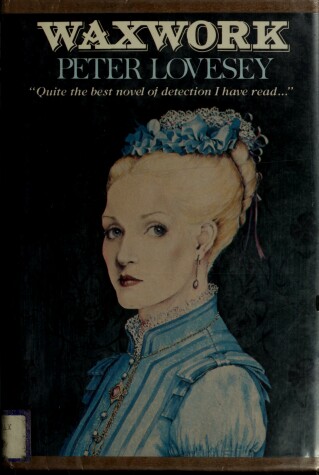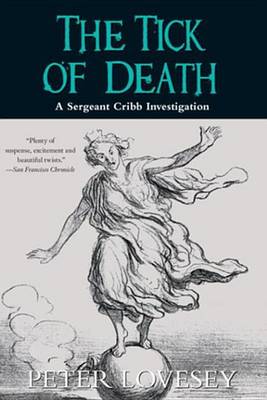Sergeant Cribb
9 total works
London, 1888. Though the beautiful Miriam Cromer has confessed to the murder of her husband’s assistant, she is still confident of her acquittal. But then she is sentenced to hang. She blames her husband, but he has an alibi. Sergeant Cribb and Constable Thackeray must discover what really happened at Park Lodge on 12th March, 1888, and quickly.
A sadistic practical joker is haunting the popular music halls of London, interfering with the actors and interrupting their acts by orchestrating humiliating disasters that take place in view of the audience. A trapeze artist misses her timing when the trapeze ropes are shortened. A comedian who invites the audience to sing along with him finds the words of his song “shamefully” altered. Mustard has been applied to a sword swallower’s blade. A singer’s costume has been rigged. The girl in a magician’s box is trapped. Then the mischief escalates to murder. Or was murder intended all along? That indomitable detective team, Sergeant Cribb and Constable Thackeray of Scotland Yard, must track down the elusive criminal.
London, 1889: After Jerome K Jerome’s Three Men in a Boat became a Victorian bestseller, rowing on the Thames was the great craze of 1889. When an elementary school teacher in training takes a midnight swim in the Thames and witnesses a body being dumped, Sergeant Cribb and Constable Thackerey are called to investigate. They uncover strange parallels with the enormously popular Victorian novel, but nobody will take them seriously. Following their instincts, they stick doggedly to the trail, which leads upstream to Oxford.
The first book in the Sergeant Cribb series, from Peter Lovesey.
In Victorian London, race-walking, or 'wobbles', are all the rage. So on a Monday morning in November 1879 the crowds gather for Islington's bizarre six-day endurance walking race.
By Tuesday, one of the contestants is dead. Tetanus from a blister is assumed, but then there is a second death, and this time it's definitely murder. A bemused Sergeant Cribb from Scotland Yard is called in, along with Constable Thackeray, and they soon discover that something foul is at play.
Reissue of Peter Lovesey's first acclaimed book that started his career nearly 50 years ago.
Pugilism, a brutal form of bare-knuckle boxing, is forbidden by law in late Victorian England, but Sergeant Cribb discovers evidence that it continues in secret, finding a corpse whose hands were “pickled” for fighting. A young constable called Henry Jago is sent to infiltrate the gang, which he has to submit to a rigorous programme of purging, pickling and training. But Jago is endangered when more murders ensue and Cribb must intervene at a perfectly crucial time to prevent young Jago from being battered to death.
Brighton, 1882: Albert Moscrop spends his holiday peering at beachgoers through a telescope, piecing together disarmingly trivial observations into a compelling drama for his own amusement. A keen student of human nature, Moscrop concentrates his interest on one particular family—the Protheros, especially the beautiful Zena Prothero, whose husband appears to take her for granted. Moscrop gradually moves into the circle of the Prothero family, only to become involved in a sensational murder. All of Brighton is horrified by the gruesome crime, and the local police seek the help of Scotland Yard’s Sergeant Cribb and Constable Thackeray, who soon find themselves challenged by the strangest case of their careers, one as mystifying as it is macabre.
The spiritualist movement has captivated a segment of Victorian London: manifestations, the occult, and “sensitives” are in vogue. When séance sites become targets for theft, Sergeant Cribb and Constable Thackeray are on the case. But then someone murders the medium, and the two find themselves rubbing shoulders with some rather eccentric suspects.
London, 1884: A series of bomb blasts in public places is causing mayhem throughout the city. Even Scotland Yard’s CID office becomes a target, throwing suspicion on Constable Thackeray. The primary suspects are Irish terrorists seeking independence, but could the villain be someone else? A beautiful Irish woman? An American athlete? Sergeant Cribb reluctantly enrolls in a bomb-making course and infiltrates the Dynamite Party.
Based on the real events in London between 1884 - 1885, the story had its own resonance ninety years on.




